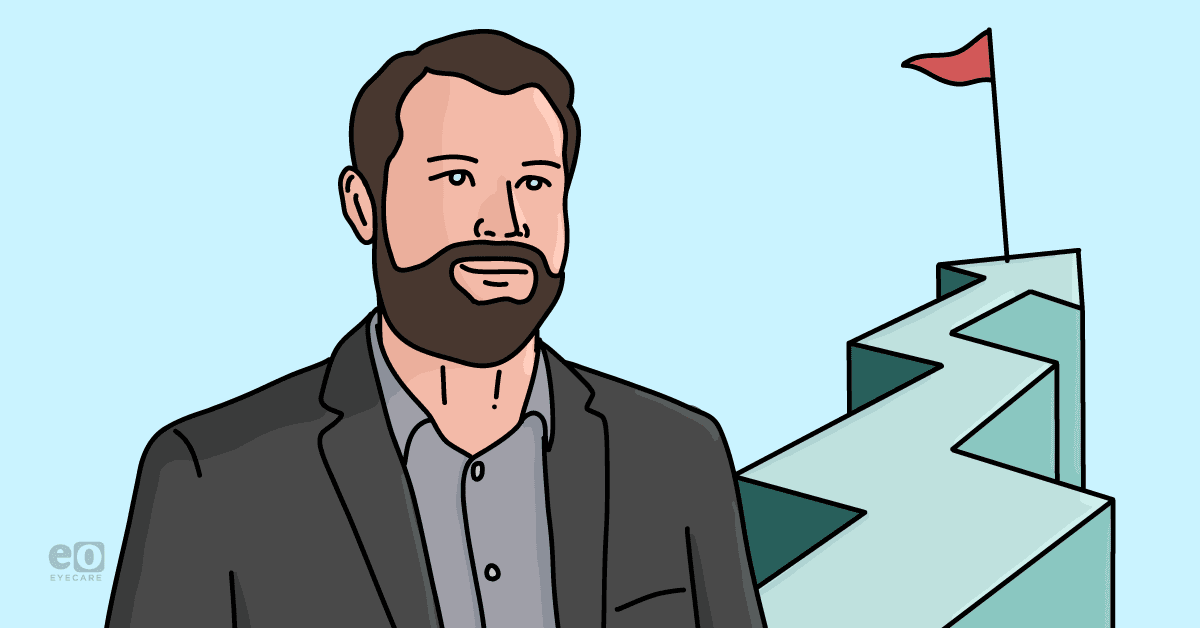Meet Josh Dalley, OD, a Lead Remote Doctor with AES
I made the decision to move from traditional to remote optometry in order to provide eye exams to patients with limited availability to medical services. AES offers optometrists to provide optometric care to patients of the Practices in the network that have remote capabilities and that need doctors. They leverage advanced technology that unlocks vision health for those without reliable access to an onsite optometrist.
What is the rationale behind remote optometry?
Remote care is not meant to replace an onsite doctor. Ideally everyone in the country would have access to an in-person eyecare professional, but unfortunately, the demand is too high. Remote care gives us an opportunity to reach people who wouldn’t receive eyecare otherwise.
Many patients can’t get an eye exam for months because they have vision needs that can’t be addressed—there just isn’t a doctor available. Remote optometry gives them immediate access to a doctor who can provide them with a prescription to get the glasses or contacts they need. Even more than that, I have had multiple patients where I’ve seen an optic nerve head swelling, and I can tell them, “This is an emergency. We need to send you out.” Those patients wouldn’t have known to seek emergency care if it were not for remote optometry.
It’s also important to note that remote care isn’t for every patient. Some patients have advanced medical conditions, ulcerations on the front of the eye, advanced diabetic retinopathy, or other serious conditions that require an onsite doctor. Part of my job is to make sure that I can find my patients the treatment they need and be seen by a doctor who can address the level of care their condition requires.
What happens during a remote exam?
The remote exam is meant to mimic an onsite exam as closely as possible. A tech is in the room with the patient and together they go through the normal pre-exam process, including an automated refractor (AR) reading, getting their pressures read, performing a visual field test, and taking retinal photos.
Once they are finished with these initial tests, the remote doctor receives a notification that the patient is ready for the exam. The doctor can then “call in” via two-way video technology and observe the patient with the help of the onsite tech, who assists with confrontational visual field testing, checking the pupils and extraocular muscles, and doing cover tests. The tech also shares a slit lamp video of the anterior surface of the eye, which the doctor can review and evaluate. Next, the tech will put the phoropter in front of the patient and the doctor will perform the refraction themselves, as though they were right there in the room.
A remote exam is standardized from one office to the next, so the quality of each exam is both high and consistent. That’s one of the things that I appreciate most—I can expect the same process and same type of exam from office to office and state to state. I love that this standardization gives me the opportunity to work with a more diverse group of people and with different techs and offices. As a result, I can build a greater connection and create an extended community with the diverse group of patients I see.
A typical patient encounter as a remote optometrist is very similar to what I would provide onsite. I spent the same time with the patient—and often longer if a patient has greater needs or additional questions. My time with a patient isn’t shortened because of the remote nature of the visit.
What are the benefits of remote care –
for doctors and patients?
I live in Pocatello, Idaho, so I’m able to see patients in any state I’m licensed in. Currently, I can see patients in Utah, Iowa, Louisiana and Georgia all in one day, because those are states where I’m licensed to provide care.
The benefits for me are huge. I remember being a little bit on the fence about the whole remote care thing at first, just because there are so many different factors that go into it, and it’s a change. It’s a big adjustment from what you’re learning at school.
But the first time I conducted a remote exam, I thought it was amazing. You’re set up with a home laptop. You have multiple screens. And you have monitors where you can see the patient’s retinal photos and visual field tests. You see the patient’s history and can talk to them on video so that you see everything at once. A remote exam gives you a great opportunity to give the patient real-time feedback, see all their information, access their history, and talk to the patient at the same time. One of my favorite parts of remote care is the relationships I’ve developed with my patients and the time I can spend with them.
The patient benefits are also huge. I’ve had several patients tell me it was the most thorough exam they’ve ever had—they are genuinely excited about the technology. Patients are interested in seeing their pictures on the screen and excited about the automated phoropters and getting their refraction locked in by a doctor far away. In turn this makes them more engaged in their own care and in what they have to do to protect their vision.
Remote optometry has also impacted my life in a positive way. I can practice at the top of my license and provide care to dramatically underserved populations, so I know I’m making a difference. I also have a better connection with my family because I’m not spending time commuting. Even if I’m conducting an exam, just knowing they are there, close by, it’s a huge lift for me as a family man.
Interested in practicing from home?
Learn more about Access Eyecare Services and how you can serve populations who lack access to onsite optometrists.
